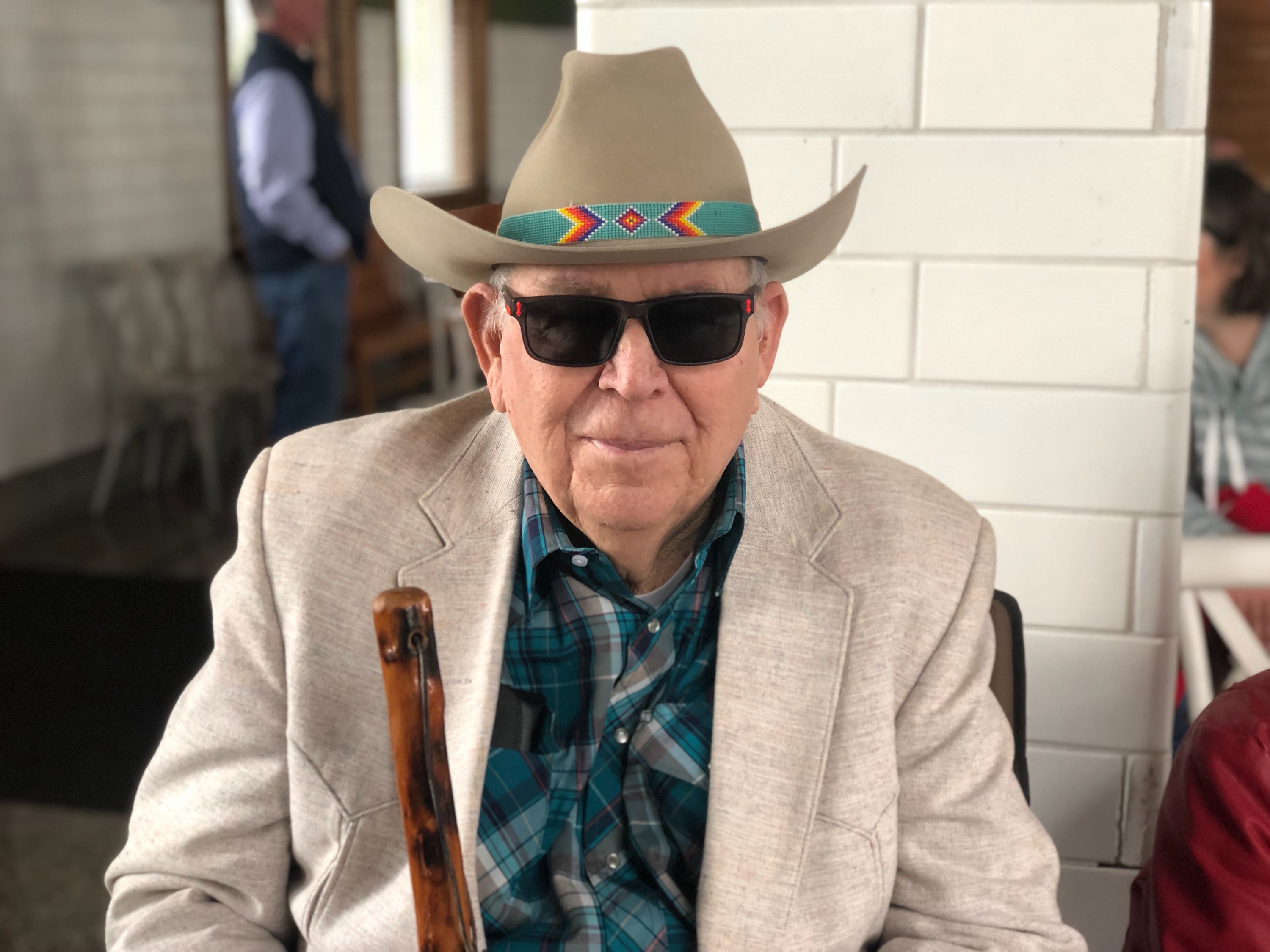By Clara Caufield
Native Sun News Today Columnist
Earlier this month, the Northern Cheyenne and Sioux - indeed all Indian Country - lost a good friend.
John L. (Jack) Bailey (88), also known as Little Owl to the Cheyenne, a non-Indian rancher who lived in Cheyenne country for all his life, went on to the Next Camp. He was a 4th generation rancher; his parents some of the earliest white homesteaders in 1883 on land then part of the reservation.
The Bailey ranch, located just off the northern boundary of the Northern Cheyenne reservation, is where the historic Deer Medicine Rocks are located, a gigantic sandstone formation reaching to the sky, clearly visible, though a few miles away from State Highway 39. This is where Sitting Bull conducted a Sun Dance, offering flesh not too long before the Battle of the Little Big Horn and was given a vision of soldiers “falling from the sky”, which soon after happened.
John L. (Jack) Bailey, known as "Little Owl" among the Northern Cheyenne, 1930-2019. Courtesy photo
A Cheyenne ceremonial man, Ice assisted Sitting Bull during that Sun Dance. Ever since, the site has been held reverently, of sacred significance to the Tribes and many students of that era and historic conflict.
Jack and his half-brother, Leo Schmaus, a fluent speaker of the "old" Cheyenne language and thus an interpreter, grew up with the Northern Cheyenne, making life-long friendships, particularly the Many Bad Horses, (Jack was adopted as a brother by Donlin Many Bad Horses, highly respected ceremonial man); Kinzel, Harris and Highwalker families who lived close. He told of their youthful adventures riding the hills, once going to the Deer Medicine Rocks to carve their names in the sandstone, although normally they avoided the sacred place out of respect, and perhaps even a little spiritual trepidation. Great grandmother Alice Kinzel remarked “That is a Sioux place.” Early in life, he learned about the importance of the site on the private ranch which he was to later inherit.
Jack was a life-long protector and good steward of the Deer Medicine Rocks. Tribal members were always welcome to visit and conduct ceremonies, only asked for the courtesy of letting him know. On the other hand, that was not so for non-Indians. He kept a book, logging in requests from around the world to visit the site and accommodated most under strict conditions. First, they had to be guided and were not allowed to gather souvenirs, not so much as a pebble.
Otherwise, the Deer Medicine Rocks could have been dismantled, one little rock at a time. Jack often personally guided tours, sharing his knowledge, but also, during busy ranch seasons called upon trusted tribal members to do the same, giving a tribal perspective. All of this was free – the Baileys did not commercialize the site, although they easily could have, though often the tribal guides received nice tips. Instead the Baileys made their living from ranching, employing many Cheyenne in the process.
Jack told a story about a group of non-Indians who snuck up to the Medicine Rocks one night, only to rapidly return, terrorized by the sounds and experiences they had there. “Served them right,” he chuckled. “You don’t mess with the ‘Rocks’.”
Contact Clara Caufield at acheyennevoice@gmail.com
Copyright permission Native Sun News Today
Join the Conversation


